|
||||||||||||||||||||||
![Home - Air Power Australia Website [Click for more ...]](APA/APA-Title-Main.png) |
||||||||||||||||||||||
![Sukhoi PAK-FA and Flanker Index Page [Click for more ...]](APA/flanker.png) |
![F-35 Joint Strike Fighter Index Page [Click for more ...]](APA/jsf.png) |
![Weapons Technology Index Page [Click for more ...]](APA/weps.png) |
![News and Media Related Material Index Page [Click for more ...]](APA/media.png) |
|||||||||||||||||||
![Surface to Air Missile Systems / Integrated Air Defence Systems Index Page [Click for more ...]](APA/sams-iads.png) |
![Ballistic Missiles and Missile Defence Page [Click for more ...]](APA/msls-bmd.png) |
![Air Power and National Military Strategy Index Page [Click for more ...]](APA/strategy.png) |
![Military Aviation Historical Topics Index Page [Click for more ...]](APA/history.png)
|
![Intelligence, Surveillance and Reconnaissance and Network Centric Warfare Index Page [Click for more ...]](APA/isr-ncw.png) |
![Information Warfare / Operations and Electronic Warfare Index Page [Click for more ...]](APA/iw.png) |
![Systems and Basic Technology Index Page [Click for more ...]](APA/technology.png) |
![Related Links Index Page [Click for more ...]](APA/links.png) |
|||||||||||||||
![Homepage of Australia's First Online Journal Covering Air Power Issues (ISSN 1832-2433) [Click for more ...]](APA/apa-analyses.png) |
||||||||||||||||||||||
| Last Updated: Mon Jan 27 11:18:09 UTC 2014 | ||||||||||||||||||||||
|
||||||||||||||||||||||
|
||||||||||||||||||||||
![Home - Air Power Australia Website [Click for more ...]](APA/APA-Title-Main.png) |
||||||||||||||||||||||
![Sukhoi PAK-FA and Flanker Index Page [Click for more ...]](APA/flanker.png) |
![F-35 Joint Strike Fighter Index Page [Click for more ...]](APA/jsf.png) |
![Weapons Technology Index Page [Click for more ...]](APA/weps.png) |
![News and Media Related Material Index Page [Click for more ...]](APA/media.png) |
|||||||||||||||||||
![Surface to Air Missile Systems / Integrated Air Defence Systems Index Page [Click for more ...]](APA/sams-iads.png) |
![Ballistic Missiles and Missile Defence Page [Click for more ...]](APA/msls-bmd.png) |
![Air Power and National Military Strategy Index Page [Click for more ...]](APA/strategy.png) |
![Military Aviation Historical Topics Index Page [Click for more ...]](APA/history.png)
|
![Intelligence, Surveillance and Reconnaissance and Network Centric Warfare Index Page [Click for more ...]](APA/isr-ncw.png) |
![Information Warfare / Operations and Electronic Warfare Index Page [Click for more ...]](APA/iw.png) |
![Systems and Basic Technology Index Page [Click for more ...]](APA/technology.png) |
![Related Links Index Page [Click for more ...]](APA/links.png) |
|||||||||||||||
![Homepage of Australia's First Online Journal Covering Air Power Issues (ISSN 1832-2433) [Click for more ...]](APA/apa-analyses.png) |
||||||||||||||||||||||
| Last Updated: Mon Jan 27 11:18:09 UTC 2014 | ||||||||||||||||||||||
|
||||||||||||||||||||||
| APA
Mirror - US Air Force Air & Space Power Journal - Chronicles |
|||
| |
|||
|
DISTRIBUTION A: Document
created: 26 July 00 Expanding the Envelope—
|
|
Fig.1 GBU-31 JDAM (Boeing). |
Other means of increasing the accuracy of the JDAM have been investigated, of interest are the classified Orca and Hammerhead programs, based upon the use of millimetric wave (MMW) radar and synthetic aperture radar (SAR) autonomous terminal seekers, respectively. These would supplement the GPS/inertial midcourse guidance, providing a highly accurate terminal guidance capability.
The JDAM was the primary weapon of the B-2A during the Allied Force campaign. It is supplemented by the 4,700 lb GBU-37, which comprises a modified GBU-36 tailkit and the deep penetration BLU-113 warhead developed for the Desert Storm bunker busting effort.
The limitation of the JDAM at this time is that it is not well suited for attacks on moving surface targets, be they land based or other. While precomputing a likely aimpoint may be a viable improvisation for a low altitude drop, the time of flight of the weapon for a more typical high altitude drop renders this approach inflexible.
The outlook for the coming two decades is that of the JDAM family of munitions supplanting the Paveway family and GBU-15/AGM-130 as the USAF's primary guided bombs. The USAF MMTD development program, aimed at producing a compact 250 lb class GPS/inertially guided weapon with the lethality of established bombs, has proved to be very successful.5 Utilising experience gained during the EDGE trials, future production derivatives of the MMTD will allow low observable fighters like the F-22 and JSF to carry a respectable number of rounds, and emulate the B-2A's capability to engage multiple aimpoints in a single pass.

Figure 2. Northrop GBU-36 GAM (Northrop)
The focus in the shorter term has been largely upon improving the accuracy, lethality and operational flexibility of the GPS guided bomb in the core role of strike against fixed targets.
The question which arises now is that of how to best extend the envelope of the Low Observable striker with its GPS / inertially guided weapons, to encompass other target sets, and by default, other more specialised strike roles.
Prior to the advent of Low Observable strike aircraft, it was customary to develop highly specialised weapons for such roles. The USN developed AGM-84 Harpoon family was devised for antishipping strike. A range of air delivered naval mines and modification kits for the Mk.80 series bombs were developed and also widely deployed. The CBU-97/B Sensor Fused Weapon was developed for destroying massed formations of armour and soft skinned vehicles, and deployed as payloads for dispensers and the AGM-154 JSOW glide weapon. For highly precise strikes, the GBU-15 and AGM-130 glidebombs were developed, using a combination of weapon mounted imager and datalink, to provide man in the loop terminal guidance.6
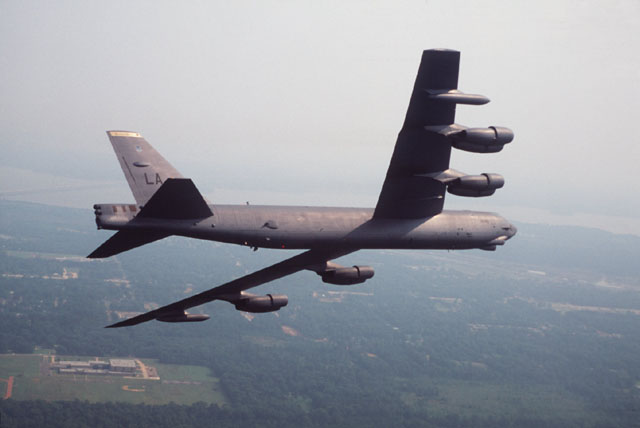
Figure 3. Boeing B-52H (USAF).
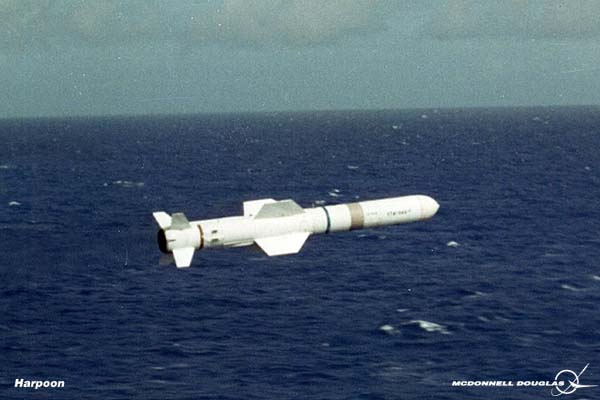
Figure 4. Boeing AGM-84A Harpoon (Boeing).
In the future environment of a USAF equipped with a top tier strike force of B-2A, F-22A, JSF, and possibly a B-2 based or other replacement for the B-52 and B-1B, many of these specialised weapons will present difficulties as their delivery modes were conceived during a period predating the need for internally carried weapons. This will be a major issue for the F-22A and JSF.
It is therefore prudent to explore some of the more specialised strike roles and consider alternatives which are compatible with the delivery environment.
Maritime Strike and Aerial Naval Mining
The efficacy of land based air power in maritime strike and the delivery of naval mines is historically well documented. Land based maritime strike aircraft played a decisive role during the Second World War, operated by both Allied and Axis powers. The Battle of the Atlantic, the Murmansk convoys, the Mediterranean war, the Japanese advance on Malaya, the Battle of the Bismarck Sea, and the blockade of Japan were all decisively shaped by land based air power. Indeed, Gen. Curtis LeMay's B-29 force played a more important role in the mining of Japanese home waters than the USN's submarine force did.7
During the Cold War, the Soviet Aviatsiya Voenno-Morskovo Flota (AVMF or SNA) fielded hundreds of Bear, Badger and Backfire bombers in this pivotal role.
In the Western community, the use of land based air power for maritime strike and naval mining operations has been adopted on a large scale by the USAF and other allies, the most notable being the Australians. Australia's RAAF modified its force of F-111C aircraft to launch the Harpoon, and deliver naval mines, in addition to its Harpoon capable P-3C and F/A-18A force.
In USAF service the B-52G/H is the primary maritime strike and mining asset, with the B-1B also recently cleared for mine delivery.8
Strategic bombers are an invaluable asset for strategic maritime warfare, as they posses response times and flexibility which cannot be matched by naval assets. The time to position a carrier battle group may in many situations be too great to exploit a developing opportunity to make a decisive strike, or close down an important shipping lane or port before a hostile force sails.
There are many other situations where land based air power is better suited for maritime strike and mining. These arise where an opponent has sufficiently strong land based air capabilities to challenge a carrier battle group. If carrier based aircraft are mostly occupied defending the carrier, little effort will be expended on the primary offensive role.
In maritime warfare, be it anti-shipping strike or mining, a Low Observable capability confers the very same advantages it does in the strategic penetration and interdiction roles. The ability to covertly stalk a Surface Action Group, Carrier Battle Group, convoy or to covertly lay a minefield, yields the decisive advantage of surprise and minimises loss rates.
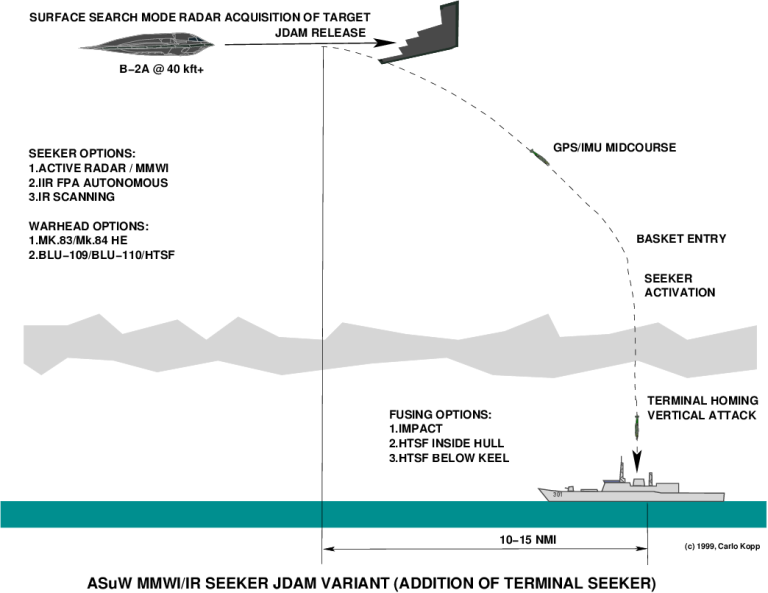
Figure 5. CONOPS for AsuW JDAM (Author).
The B-2A has tremendous potential in both of these roles. While its APQ-181 attack radar possesses a maritime search mode, the demise of the AGM-137 TSSAM denied the B-2A a suitable weapon for anti-shipping strike.9 While in theory it could be adapted to deliver naval mines in the manner performed by the B-52G/H and the B-1B, ensuring accurate deliveries requires a low altitude drop with concomitant potential for exposure, and a reduction in combat radius. The same difficulties would also arise with carrying the AGM-84 Harpoon, which would also require a weapon specific interface.
While it may be argued that a low altitude delivery could be tolerated, it is hardly the optimal strategy for solving the problem. Indeed, a much better alternative exists - adaptation of the GBU-31 JDAM.
For anti-shipping strikes, we propose the following adaption: the GBU-31 is modified by the addition of a nose mounted terminal seeker, and the autopilot software configured to fly the bomb over the intended target and execute a vertical dive attack. The CONOPS is illustrated in Figure 5.
There are a number of choices available in seeker technology:
While the infra-red seekers are passive, they are also weather limited, and in the the author's view the MMWI seeker is the better choice. Importantly, enough extant seeker technology exists that the development of an anti-shipping seeker for the JDAM is a low risk and low cost proposition.
From the perspective of defeating shipboard defences, the vertical attack profile is particularly attractive. This is because most shipboard terminal defences, be they based upon SAMs or AAA, are optimised for the detection and engagement of sea skimming missiles, low flying aircraft, or shallow diving high speed missiles. Indeed, many shipboard defensive packages will have a blind zone in a cone above the vessel. Many search radars will have sidelobes in this area, and the bomb's radar return may appear as a target in the mainlobe, at a much lower elevation angle. Indeed the British ALARM missile, equivalent to the AGM-88 HARM, exploits this very effect. The same coverage issue will apply to many shipboard ESM systems, and the emissions from the MMWI seeker will scatter off the structure, producing spurious tracks. Even should shipboard defences be capable of detecting and engaging the bomb, unless they can cause the weapon to prematurely explode, it may still be capable of inflicting damage.
From the perspective of lethality, the vertical attack profile is also attractive. The historical track record of 1,000 lb class gravity bombs delivered against shipping by dive bombers is impeccable, indeed many vessels much better armoured than contemporary types succumbed to the USN's SBD Dauntlesses, the Luftwaffe's Ju-87 Stukas and the JNAF's D3A Vals.
Lethality could be further enhanced by exploiting the BLU-109/B warhead and the Hard Target Smart Fuse, devised for bunker busting. By fusing the weapon to explode beneath the vessel, after penetrating through the bottom, it is feasible to produce a similar effect to that of a Mk.48 torpedo, and break the keel of a smaller combatant. Indeed, the 600 lb class Tritonal filling of the BLU-109/B is similar in size to the warhead of the Mk.48 series. Unlike the torpedo, the JDAM would cause significant structural damage while penetrating through the vessel, thereby weakening it prior to warhead initiation.13
From a strategic perspective the B-2A armed with sixteen anti-shipping GBU-31 weapons would provide the capability to destroy an eight vessel strong SAG in a single pass, budgeting two rounds per target. A pair of aircraft would be capable of sinking a convoy or a carrier battle group.
The economics of the B-2A and the proposed anti-shipping GBU-31 variant are also very attractive, since even with a $80k unit seeker cost, and a $20k baseline weapon cost, each anti-shipping GBU-31 round is about 25% the cost of an AGM-84 Harpoon, with more than twice the warload per round.
The JDAM also has much potential as the basis for an air delivered naval mine. The extant USN Mk.36, Mk.40, Mk.41 Destructor and Mk.62, Mk.63, Mk.64 Quickstrike naval mines are all based upon the Mk.80 series bombs, fitted with fusing kits.14 The Mk.62 was recently cleared on the B-1B.
The use of conventional aircraft for naval mine delivery introduces several problems, especially if a major harbour or entry channel is being mined. The aircraft are likely to be exposed to heavy defensive fire, and radar tracks may be used to attempt to localise the position of the mines for mine-sweeping operations. The use of the B-2A for mine delivery avoids both of these problems.
An optimal mine delivery is produced by an accurate low speed, low altitude drop, conditions which are not compatible with a 40 kft penetration altitude. The impact velocity and position drift incurred with a high altitude drop are problematic.
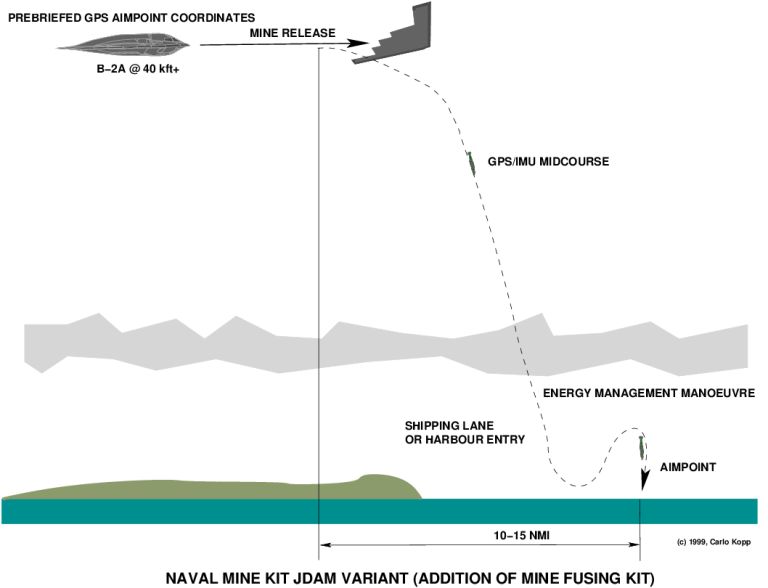
Figure 6. JDAM Naval Mine CONOPS (Author).
The use of the JDAM tailkit for an air delivered mine provides a very simple and elegant solution to this problem. We propose that the JDAM autopilot software be adapted to fly the weapon through a pull up energy management manoeuvre prior to impact at the programmed GPS coordinates. In this manner, the mine can be delivered with sufficient accuracy to facilitate later removal, if so intended, yet impact the surface at the optimal velocity and angle despite being dropped from a high altitude.
The strategic implications of such a weapon carried by the B-2A are not trivial. This capability would allow the USAF to close any defended port, channel or shipping lane with virtual impunity. Moreover, the mines could be delivered covertly, and the opposing party presented with a strategic fait accompli.
As with the anti-shipping seeker equipped JDAM variant, the naval mine variant is also an economical weapon. While it will be more expensive than a conventional "dumb" Quickstrike mine, the cost overheads of a fighter and SEAD escort during delivery will not be incurred. The principal engineering issue will be repackaging the extant mine fusing package in a manner compatible with the aerodynamics of the JDAM.
Both of the proposed JDAM variants could in principle be carried by any combat aircraft equipped to carry the baseline GBU-31 and GBU-32 weapons. Therefore neither are unique in application to the B-2A. Indeed, the anti-shipping seeker equipped weapon would be an attractive addition to the F-22A and the JSF armoury. Its low cost also makes it a practical weapon for use by conventional strike aircraft against undefended or lightly defended naval targets. A JDAM based naval mine would allow the B-52G/H and B-1B to performing mining from altitudes where they are not exposed to low level "trash fire".
There is little doubt that both JDAM variants could significantly broaden the range of roles which the B-2A can perform, and further extend the capabilities of the F-22 and JSF.
Battlefield Air Interdiction, Precision Strike and Related Roles
The battlefield interdiction role has traditionally been very demanding in terms of weapon accuracy, and the ability to engage moving, and frequently fleeting targets. Recent experience during the Desert Storm and Allied Force campaigns indicates that the political costs of collateral damage incurred during battlefield interdiction strikes, or related types of operations such as Scud hunting or the interdiction of small unit ground forces, make this a potentially decisive role. Indeed the political effects of blue-on-blue engagements, or collateral losses of civilian or refugee life, frequently produce political and public responses which are disproportionate against the scale of the event itself.
The historical evolution of BAI CONOPS' was shaped primarily by the land warfare environment during and following the Second World War. The emphasis in Wehrmacht and later Soviet models was always upon the application of overwhelming mass of armour and motorised infantry. Refinements in manoeuvre warfare doctrine and the emergence of assault and attack helicopters reinforced this trend by increasing firepower and mobility.
These evolutionary pressures led to the development of guided weapons intended to break up massed land warfare manoeuvre forces. The first generation of guided weapons intended for this purpose is typified by the AGM-65 family of imaging guided missiles, and the Pave Tack or Lantirn targeting pods used with the Paveway family of laser guided bombs. All of these weapons performed admirably during the Desert Storm campaign.
The second generation of guided weapons developed to break up massed armour is typified by the use of multiple guided or unguided submunitions, dispensed by a guided or unguided free fall or glide weapon, or a ballistic or cruise missile. The SUU-65/CBU-97/B SFW, the WCMD variant, the US AGM-154 JSOW family or European PDWS/KEPD-350 are all current examples of this design philosophy, pioneered almost two decades ago in the DARPA/USAF Assault Breaker program.
Second generation submunition based anti-armour weapons are extremely potent, and capable of rapidly inflicting massive casualties against armoured and soft skinned mobile targets. Therefore they represent at this time the best available means of dealing with large scale armoured assaults.

Figure 7. Raytheon GBU-27 Paveway III (Raytheon).
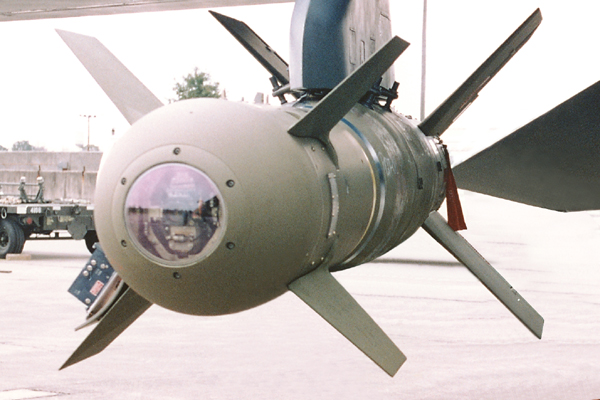
Figure 8. Boeing GBU-15 (Boeing).
However, experience during the Allied Force campaign suggests that many scenarios will arise in which the ability to attack massed forces is much less useful than the ability to individually identify hostile armour and vehicles, and selectively destroy these. This is true also of precision strike operations, insofar as collateral damage can produce politically induced paralysis.
The difficulty which arises in this context is that the accurate identification of transient targets and the delivery of extant optical imaging or laser guided weapons typically requires low altitude flight, especially if cloud cover exists. This needless to say is an environment where the survivability advantages of high altitude Low Observable penetration are compromised.
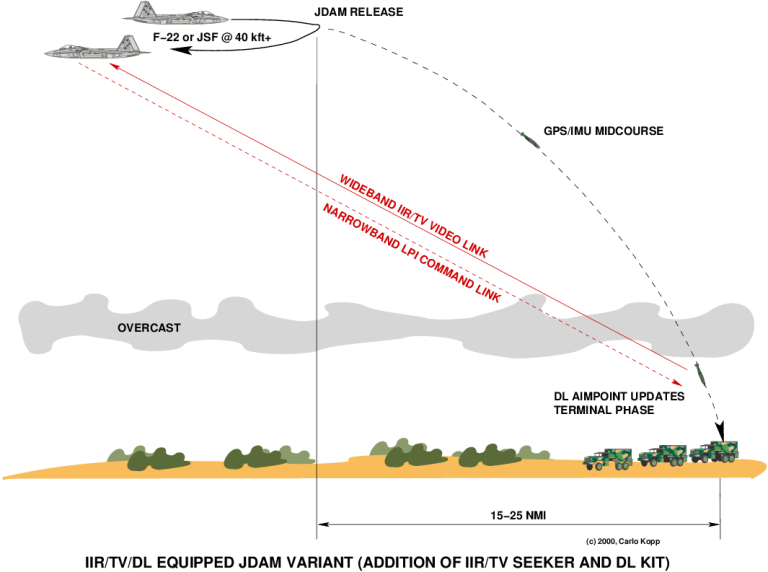
Figure 9. CONOPS for Imaging/Datalink JDAM Variant (Author).
The optimal solution to this problem is a weapon compatible with the preferred delivery profile for aircraft like the F-22 and JSF, yet providing the man-in-the-loop visual targeting capabilities of extant laser guided and imaging weapons. Indeed, the AGM-130 proved to be one of the most effective weapons employed during Allied Force, as its combination of GPS / inertial midcourse guidance and datalink remote controlled imaging terminal guidance provided the capability to deliver from safe altitudes with the precision and discrimination inherent in an optically guided weapon.
It is not feasible to adapt the AGM-130/GBU-15 family to the F-22A or JSF, as the weapon is far too large to fit into a fighter sized weapon bay, and the external AXQ-14 or ZSR-1 datalink pod compromises stealth through its shape and wide angle transmission pattern. Moreover, the basic weapon is expensive.
The natural candidate for a replacement weapon for the GBU-15, is an adaptation of the GBU-31/32 JDAM family using a nose mounted imager and two way datalink. A number of mature imaging seekers, developed for the AGM-65 and GBU-15/AGM-130 families of weapons exist. A new seeker, using Platinum Silicide or Indium Antimonide FPA technology is also feasible. There are no fundamental technological challenges inherent in fitting an imaging seeker to the JDAM.
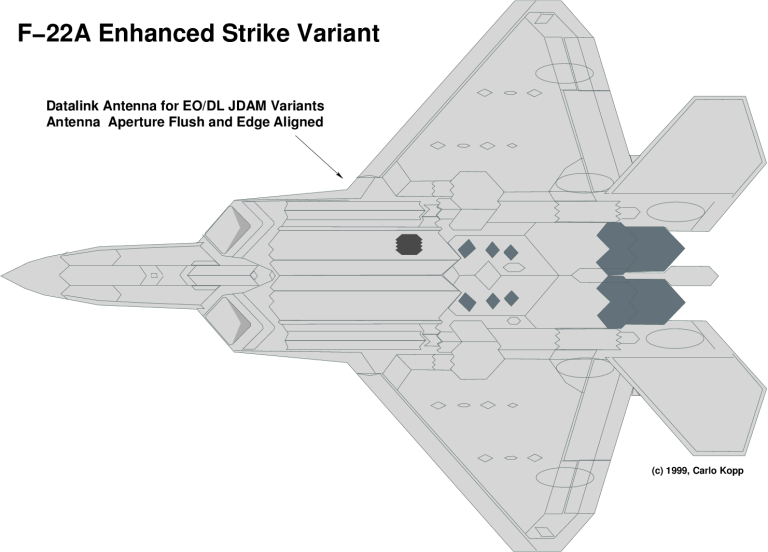
Figure 10. F-22A Ventral Datalink Antenna Installation (Author).
The difficult issue is that of the two way datalink. It must not compromise the radar cross section of the fighter, nor can it employ a fixed wide angle beam to flood the space in which the bomb is flying with microwave transmissions, as this would compromise the fighter's position to an ESM system.
The problem of emissions can best be solved by the use of a narrow J or K band pencil beam produced by a steerable antenna. A mechanically steered planar array behind a bandpass window would largely meet this requirement, but would occupy a prohibitive amount of internal volume on airframes where spare volume is a precious commodity. The geometry of the engagement precludes the use of the fighter's multimode radar for this purpose, only a ventral antenna location is genuinely compatible with the required antenna field of regard.
Clearly the only viable technological solution is the use of an active phased array, which antenna sizing constraints require to be in the upper J band or the K band. Indeed, the choice of the K band places the datalink out of the operating range of most extant warning receivers.
An active array antenna, smoothly embedded into a flat portion of the lower fuselage, with its boresight pointing vertically down, addresses the basic problems of signatures and engagement geometries.
The choice of
appropriate placement on the lower fuselage is another problem, since
both fighters are densely packed, and even should volume be available,
such a modification would require that the complete lower fuselage RCS
design be requalified, at considerable expense. While the JSF could
still be adapted at this time with minimal expenditure, to accommodate
this antenna, this is not true of the F-22A which is for all practical
purposes frozen in its basic hardware design.

Figure 11. (Author).
For the F-22A the best choice would appear to be the outer segments of the main weapon bay doors, since these have adequate width to support a flush embedded antenna array of modest thickness when open or closed. It is unlikely that the antenna thickness would permit the intended carriage of an outboard AIM-120C on a LAU-142/A launcher, although careful design may permit this. There will also be a weight penalty since the door will require additional structural stiffening to accommodate the hole for the antenna. The advantage of the door mounted antenna is that it represents an incremental modification, and in theory could be structurally proven and qualified for RCS performance separately from the airframe itself. Therefore it is a significantly cheaper choice than an antenna buried elsewhere in the lower fuselage.
Given the modest range and bandwidth requirements for the datalink, output power levels can be significantly lower than that required for the radar arrays.
Placement of the datalink antenna on the JDAM tailkit is an interesting problem. The coverage required represents a conical volume pointing aft of the bomb, which must be symmetrical. A wrap-around endfire mode array would meet this basic requirement, and is not geometrically incompatible with bomb aerodynamics. The use of flexible printed circuit antenna technology would appear to be the best strategy, in effect resulting in a conformal conical array.
There is a well established base of transmission modulation schemes with LPI characteristics which would be suitable for this application. Importantly, the requirement for LPI is primarily confined to the transmissions from the aircraft, permitting the use of much cheaper albeit more detectable transmission technology for the bomb's side of the datalink. Since the bomb is transmitting its signal away from the earth, the odds of it being detected by a ground based system are minimal. This is inherent consequence of combining the high altitude delivery profile of the F-22A or JSF with this style of guidance.
The pencil beam antenna mainlobe produced by the fighter's ventral phased array will need to be steered to capture the position of the bomb. A simple technique is to track the azimuth of the intended aimpoint, and adjust the elevation of the beam with the anticipated altitude of the bomb as it descends. With several degrees of beamwidth, the width of the antenna transmission footprint is of the order of several miles.
The strategy of using a combination of imaging and datalink terminal guidance for a precision variant of the JDAM is evidently technically feasible and would appear to be relatively affordable.
For strategic strikes or battlefield strikes against fixed targets, the weapon would be used in a similar manner to the established GBU-15/AGM-130 weapons, exploiting the high altitude supersonic delivery profile of the F-22A and JSF. Both the Mk.83/84 and BLU-109/110 warheads would be used, as required.
For strikes on highly mobile battlefield targets, especially where the surface is obscured by a dense overcast, the fighter's datalink antenna could be used to receive targeting data or a video imagery feed from a loitering low altitude UAV or a ground observer with suitable equipment. This information would be used for initial targeting of the JDAMs, prior to release. Once the weapon approaches the target, the datalink beam is switched to acquire and track the bomb; the pilot would steer it to impact against the most suitable aimpoint.
This strategy would be particularly useful during sorties where highly mobile SAM systems and ballistic missile launchers are being hunted. An expendable UAV with folding wings could be delivered internally by one fighter to loiter in the area of interest, and if a suitable target is found a "shooter" CAP could be directed to engage the target. Similarly offboard targeting data from satellites, JSTARS, Rivet Joint or RQ-4A Global Hawk could be exploited to provide coarse targeting for the fighter.
Other alternative CONOPS exist. One is the use of the datalink equipped F-22A as a "master bomber", leading a strike package of F-22A or JSF without the datalink capability, but carrying the datalink capable JDAM. The master bomber would locate targets and then capture the JDAMs after they have been dropped to precisely guide them. In principle this is no different to historically documented uses of laser designator equipped lead bombers.
This JDAM variant is also usable for maritime strike operations, particularly for reducing or sinking larger combatants which have been crippled by previous strikes.
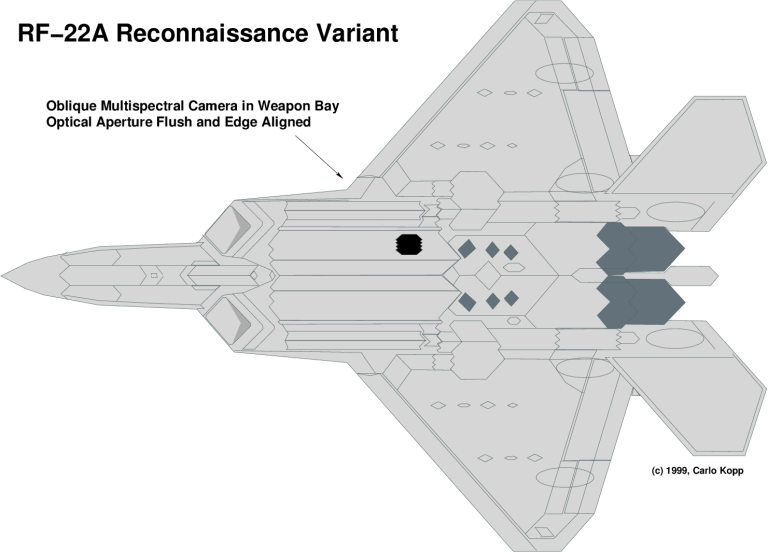
Figure 12. RF-22A (Author).
A ventral active phased array has other potential uses. One is its use as a synthetic aperture imaging radar for bomb damage assessment upon egress following a strike. Whether the additional complexity in the design justifies such a use remains to be determined.
Performing the design changes to the weapon bay door does raise other interesting possibilities. The aperture size of the hole in the door is of the required order to fit an infrared transparent window suitable for a reconnaissance camera, while the weapon bay is large enough to accommodate an optical or solid state camera with a focal length of several metres. Such a camera is suitable for high resolution imaging from the cruise altitude of the F-22A. Such a package would allow an RF-22A to fulfill the currently extant need for rapid BDA and targeting reconnaissance in time periods between imaging satellite passes, beyond the safe operating depth of standoff recon assets such as the JSTARS, U-2 and Global Hawk.
Conclusions
In this paper we have explored a number of alternative growth variants of the GBU-31/32 JDAM intended to expand the useful mission envelope of the B-2A, F-22A and JSF aircraft. All of the proposed designs represent low risk, low cost incremental extensions of extant and planned technology. All provide for significant increases in lethality and survivability over currently operational delivery system and weapon equivalents.
There can be no doubt there there is considerable growth potential in the range of possible roles performed by the B-2A, F-22A and planned JSF, and it is the author's intent to contribute to this growth with these proposals. The currently popular argument in some circles, which claims that the Low Observable bomber and GPS / inertially guided bomb are a limited capability are without substance. Even modest additions to this core capability yield weapons which are arguably superior or at least equal in capabilities to currently operational weapons such as the AGM-84, Mk.64 Quickstrike and GBU-15/AGM-130, yet are wholly compatible with the high altitude delivery regime of the Low Observable bomber.
|
|
The Author
Born in Perth, Western Australia, the author graduated with first class honours in Electrical Engineering in 1984, from the University of Western Australia. In 1996 he completed an MSc in Computer Science by research and more recently, submitted a PhD dissertation dealing with long range data links and ad hoc mobile networks. Both theses were written at Monash University in Melbourne. He has over 15 years of diverse industry experience, including the design of high speed optical communications equipment, computer hardware and embedded software. More recently, he has consulted to private industry and government organisations, and now lectures on computing topics at Monash University. He has been actively publishing as a defence analyst in Canberra based Australian Aviation, since 1980, and more recently in Amberley based Air Power International, the UK based Janes Missiles & Rockets, and the US based Journal of Electronic Defense. His work on electronic combat doctrine, electromagnetic weapons doctrine, laser remote sensing and signature reduction has been published by the Royal Australian Air Force since 1992, and he has previously contributed to USAF CADRE Air Chronicles and APJ. His most important work to date has been the development of a doctrinal model for the offensive use of electromagnetic weapons in strategic information warfare. |
Notes
1. Refer Boeing Joint Direct Attack Munition briefing notes, 1998, unclassified, and www.boeing.com website.
2. Refer Northrop GPS Aided Munition briefing notes, 1997, unclassified.
3. Refer Boeing Demonstrates First JDAM For 500-Pound Bomb, Boeing press release, July 26, 1999.
4. Dargan J.L., Capt. USAF, et al, Exploitation of Differential GPS for Guidance Enhancement (EDGE) High Gear Program, USAF paper, Kelly Dr. D.A., et al, Navigation and GPS Lessons Learned from the EDGE Program, USAF paper.
5. Knoedler A., Capt USAF, Smith T.K., Miniature Munition Technology Demonstration, Proceedings of the TECOM Test Technology Symposium, 1997.
6. Refer www.boeing.com for GBU-15 and AGM-130 data. Also GBU-15 brochure, dated 1985.
7. Chilstrom J.S., Maj. USAF, Mines Away ! The Significance of US Army Air Forces Minelaying in World War II, Air University Press, Thesis.
8. Mace A.V., B-1B Participates in Mine Exercise, USAF Press Release, Apr 22, 1997.
9. Miller J., Northrop B-2 Spirit, Aerofax, 1995.
10. Boeing AH-64D Apache Longbow briefing notes, 1998, unclassified. The author flew a demonstration sortie in the AH-64D early in 1999, operating the Longbow millimetric wave radar weapon system from the gunner's seat.
11. Matra-BAe Dynamics AIM-132 ASRAAM Briefing Notes, 1997. Also Hughes SBRC Briefing package on 128x128 InSb FPA.
12. Briefing notes, Kongsberg Penguin ASM, 1999. Also discussions with manufacturer.
13. Lennox D.S., Jane's Air Launched Weapons, 1990, details explosive fillers for the BLU-109/B and Mk.84. Also refer Royal Australian Navy website at www.defence.gov.au, pages detailing the Torrens Sinkex.
14. Lennox D.S., Jane's Air Launched Weapons, 1990.
Disclaimer
The conclusions and opinions expressed in this document are those of the author cultivated in the freedom of expression, academic environment of Air University. They do not reflect the official position of the U.S. Government, Department of Defense, the United States Air Force or the Air University.
This article has undergone security and policy content review and has been approved for public release IAW AFI 35-101.
[Air & Space Power Chronicles Home Page | Feedback? Email the Editor ]
|
|||||||||||||
![Sukhoi PAK-FA and Flanker Index Page [Click for more ...]](APA/flanker.png) |
![F-35 Joint Strike Fighter Index Page [Click for more ...]](APA/jsf.png) |
![Weapons Technology Index Page [Click for more ...]](APA/weps.png) |
![News and Media Related Material Index Page [Click for more ...]](APA/media.png) |
||||||||||
![Surface to Air Missile Systems / Integrated Air Defence Systems Index Page [Click for more ...]](APA/sams-iads.png) |
![Ballistic Missiles and Missile Defence Page [Click for more ...]](APA/msls-bmd.png) |
![Air Power and National Military Strategy Index Page [Click for more ...]](APA/strategy.png) |
![Military Aviation Historical Topics Index Page [Click for more ...]](APA/history.png)
|
![Information Warfare / Operations and Electronic Warfare Index Page [Click for more ...]](APA/iw.png) |
![Systems and Basic Technology Index Page [Click for more ...]](APA/technology.png) |
![Related Links Index Page [Click for more ...]](APA/links.png) |
|||||||
![Homepage of Australia's First Online Journal Covering Air Power Issues (ISSN 1832-2433) [Click for more ...]](APA/apa-analyses.png) |
|||||||||||||
| Artwork, graphic design, layout and text © 2004 - 2014 Carlo Kopp; Text © 2004 - 2014 Peter Goon; All rights reserved. Recommended browsers. Contact webmaster. Site navigation hints. Current hot topics. | |||||||||||||
|
Site Update
Status:
$Revision: 1.753 $
Site History: Notices
and
Updates / NLA Pandora Archive
|
|||||||||||||
|
|
Tweet | Follow @APA_Updates | |||||||||||
|
|
|||||||||||||
|
|
|||||||||||||